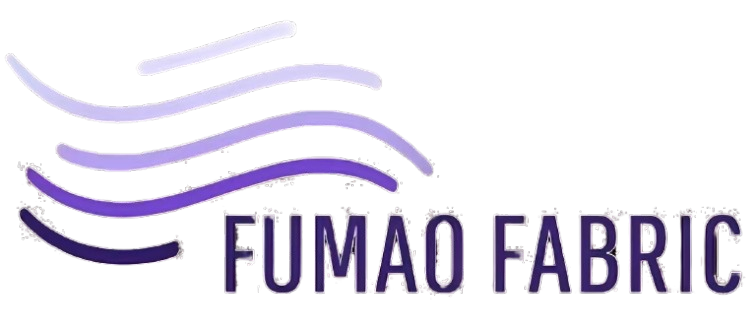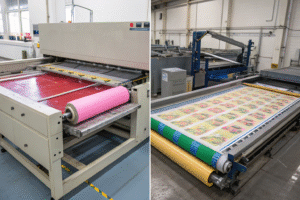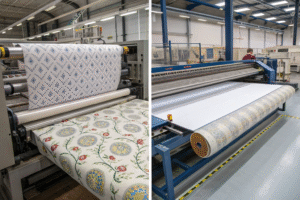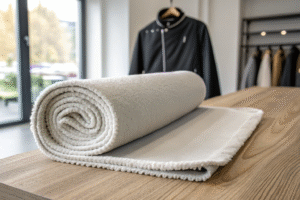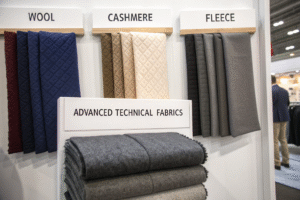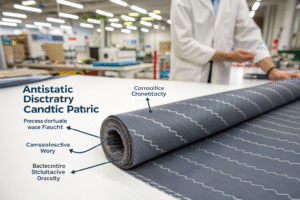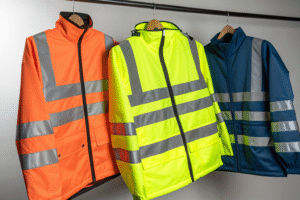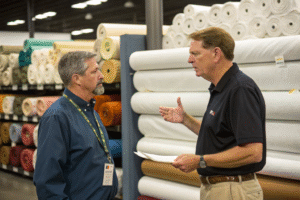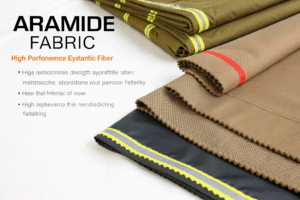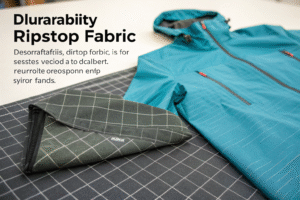Seersucker has made a major comeback in recent years, especially in high-temperature seasons when staying cool isn’t just a preference—it’s survival. Many of our American and European clients ask for breathable, low-maintenance summer fabrics, and few match the performance of seersucker. But what exactly makes it so ideal?
Seersucker fabrics are perfect for summer because they are breathable, lightweight, moisture-wicking, and require minimal ironing—making them the go-to choice for hot climates and casual fashion.
As the owner of a large-scale textile factory in Keqiao, I’ve seen a rising demand for seersucker across men’s shirts, women’s dresses, and even kidswear. We supply various fashion labels that use it as a sustainable, functional summer fabric with a timeless aesthetic. Let’s break down why this ripple-textured textile deserves a spot in every warm-weather collection.
What Makes Seersucker So Breathable and Cool?
Many fabrics claim breathability, but seersucker earns its reputation through its unique weave structure. The alternating puckered and flat stripes create small air pockets between the skin and the fabric, allowing ventilation like no other.
The puckered surface of seersucker reduces skin contact, promoting airflow and making it naturally breathable even on the hottest days.

How Does the Weave Structure Impact Airflow?
Seersucker’s trademark texture comes from slack-tension weaving. One set of yarns is kept looser during the weaving process, which creates the wrinkled effect. These irregular ridges act as built-in air tunnels, keeping skin dry and fabric from clinging during perspiration. This unique texture is not just visual; it serves a functional climate-regulating purpose.
In our production line, we’ve found that seersucker made from cotton-poly blends enhances breathability while adding wrinkle resistance. This structure makes it ideal for travelers and tropical wear, especially in resort fashion.
Why Doesn’t Seersucker Stick to the Skin?
One of the most frustrating aspects of hot weather clothing is when fabrics cling after sweating. But the raised portions of seersucker prevent full fabric-to-skin contact. This reduces the likelihood of that damp, sticky feeling and allows heat to dissipate.
Compared to flat-woven materials like poplin or twill, seersucker’s texture helps it "hover" over the skin. This airflow-centric design is why many sportswear brands choose it for summer collections. It’s comfort you can feel immediately.
Is Seersucker Easy to Care For During Summer Travel?
One reason our international clients love sourcing seersucker is that it’s practically wrinkle-proof. That’s thanks to its puckered texture—which looks naturally crinkled even after being folded or packed.
Seersucker fabrics require minimal ironing and are naturally wrinkle-resistant, making them perfect for travel and easy summer wardrobes.

Can Seersucker Withstand Frequent Washing?
Yes—and that’s crucial for hot-weather wear. Seersucker holds its shape and puckering even after dozens of washes. Cotton-based seersucker has a soft handfeel that improves over time, and the fabric doesn’t require aggressive ironing. This makes it a favorite for children’s wear and casual shirts.
We’ve exported machine-washable seersucker blends to retail buyers in Florida, California, and Texas. These markets love it for both ease and durability, which means fewer product returns for our clients.
What Makes It Low-Maintenance in Humid Climates?
Humidity is the enemy of polished fashion. But with seersucker, the natural texture disguises any wrinkles or moisture marks. The fabric dries quickly, which helps it stay fresh in damp weather. Our moisture-wicking cotton-seersucker is particularly popular in Southeast Asia and the Gulf region for this reason.
Its adaptability has made it a staple for cruisewear, resort collections, and summer uniforms in hospitality sectors where quick turnaround and smart appearance matter.
What Clothing Types Benefit Most from Seersucker?
Seersucker is one of the most versatile warm-weather fabrics. It works well across men’s, women’s, and children’s fashion—while also finding uses in home textiles and accessories.
From men’s suits to women’s dresses and baby rompers, seersucker fits every summer collection with ease and function.

Why Do Men’s Brands Love Seersucker for Summer?
Traditionally associated with southern U.S. style, seersucker suits have become a summer classic. Today, brands like Brooks Brothers and J.Crew reinvent the look with more modern silhouettes.
Our factory supplies striped seersucker shirting to several American men’s brands, which use them for breathable, lightweight, and slightly dressy pieces. These garments are ideal for offices without air conditioning or outdoor events like weddings.
How Popular Are Seersucker Dresses and Kidswear?
Seersucker dresses are a staple in women’s fashion, offering a soft drape, feminine silhouette, and playful texture. Puff sleeves and ruffled hems work beautifully with the puckered weave. In children’s clothing, seersucker is ideal because it’s comfortable, doesn’t cling, and can withstand rough use.
Our European clients frequently order pastel-colored seersucker for spring/summer kidswear lines. Paired with soft dyes and OEKO-TEX certified treatments, it’s both safe and stylish for sensitive skin.
Is Seersucker a Sustainable Fabric Choice?
Sustainability is one of the most discussed topics in modern textiles. Seersucker checks many boxes—especially when made from organic or recycled fibers.
Eco-conscious brands choose seersucker for its low-maintenance, natural fiber options and lower energy requirements in upkeep.

How Does Seersucker Reduce Energy Consumption?
Because it doesn’t need ironing and dries quickly, seersucker helps reduce home energy use. For fashion brands pushing green messaging, this is an underrated feature that aligns with eco-conscious consumer behavior.
We work with buyers who prioritize GOTS-certified cotton and low-impact dyeing processes. When seersucker is part of that equation, it strengthens the sustainability narrative.
Can Seersucker Be Made from Recycled Fibers?
Absolutely. At Fumao Fabric, we’ve produced recycled polyester-seersucker blends that mimic cotton’s handfeel while offering moisture resistance and UV protection. These blends are in demand for activewear and outdoor clothing sold in environmentally aware markets.
Combining seersucker’s structure with regenerated fibers gives clients a functional, stylish, and planet-friendly solution for summer collections.
Conclusion
Seersucker isn’t just a fabric—it’s a solution to the many problems posed by summer fashion. It’s breathable, low-maintenance, stylish, and eco-conscious. Whether our clients are building high-end resort lines or basic casualwear collections, seersucker offers unmatched performance and market appeal. As fabric manufacturers rooted in Keqiao, we’ve seen firsthand how this humble fabric ripples across seasons and borders. For buyers like Ron who prioritize quality, ease, and logistics, seersucker deserves a spot at the top of the sourcing list.
